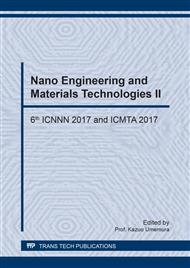p.139
p.147
p.153
p.161
p.166
p.170
p.179
p.184
p.190
High Cycle Fatigue Properties of Multi-Directionally Forged Commercial Purity Grade 2 Ti Plate
Abstract:
Tension-tension fatigue tests were conducted using ultrafine-grained commercially pure Titanium (Ti) plates fabricated by multi-directional forging (MDFing). The MDFed pure Ti plates with the thickness of 1 mm were developed aiming at dental implant application. The fatigue properties of MDFed pure Ti plates were superior to those of the conventional rolled pure Ti plates. The higher fatigue strengths in MDFed plates could be attributed to the much finer grains evolved by MDFing. Fatigue crack initiated from specimen surface, when number of cycles to failure was shorter than 106 cycles. In the high cycle fatigue (HCF) region, however, subsurface crack initiation with typical fish-eye feature was recognized in the MDFed pure Ti plate in spite of the thin thickness. Fractographic analyses revealed that no inclusion existed at the center of fish-eye. The subsurface crack initiation mechanism could be related to the inhomogeneity of microstructure with some coarse grains in the inner part of the plate.
Info:
Periodical:
Pages:
166-169
Citation:
Online since:
March 2018
Authors:
Price:
Сopyright:
© 2018 Trans Tech Publications Ltd. All Rights Reserved
Share:
Citation:


